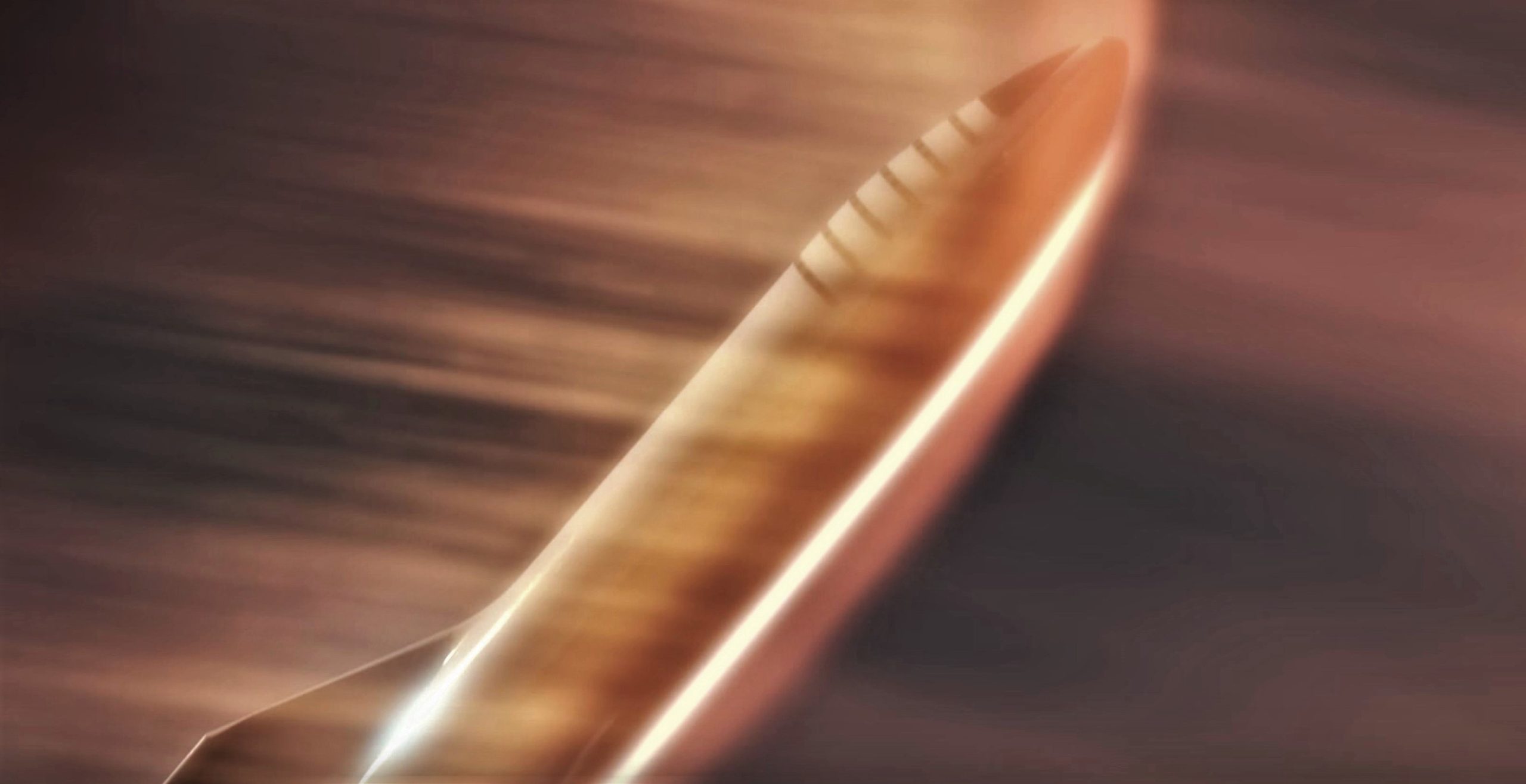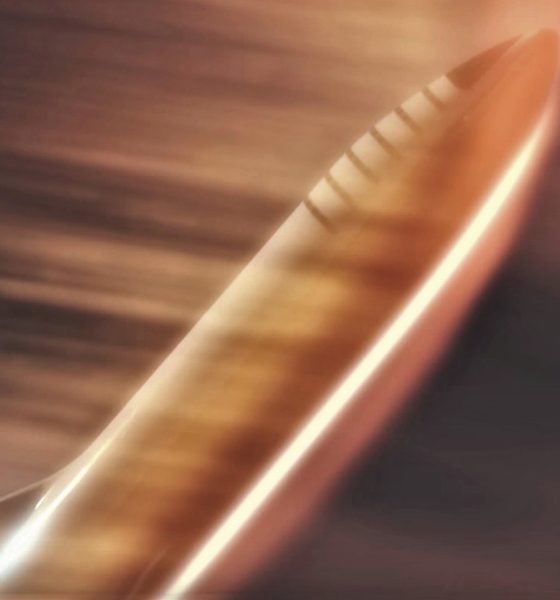

News
SpaceX CEO Elon Musk teases white-hot Starship heat shield testing in video
SpaceX CEO Elon Musk has shared a video showing what looks to be the early stages of testing for Starship’s (BFS) unprecedented metallic heat shield, recently described as a double-layered steel sandwich that will be regeneratively cooled by cryogenic liquid methane.
Testing metallic heat shield at 1100C (2000F) @SpaceX pic.twitter.com/frP5eZ5a0z
— Elon Musk (@elonmusk) January 25, 2019
The glowing metal coupon pictured in Musk’s video appears to be heated by the same high-temperature torches SpaceX (and contractors) use to spin-form Falcon 9 and Heavy propellant tank domes and Merlin 1D and MVac engines, potentially explaining the reported 1100C (2000F) the metallic (steel, presumably) heat shield was being heated to. Compared to the temperature range (~1200-1500C) Starship is expected to experience during reentries, 1100C should – according to Musk – be low enough that “no heat shield [is] needed”. If the coupon pictured is an actual double-layered, regen-cooled test article for Starship’s active heat shield, it will need to be torture-tested to 1500C (and likely beyond) to really prove its worth and reliability.
Forming a rocket nozzle pic.twitter.com/QrpcVyHAXr
— Elon Musk (@elonmusk) December 9, 2016
This is more likely an example of rough, ad-hoc testing being used to generally characterize and navigate the early stages of new technology development, hence the improvised testbed of a few ceramic insulation blankets and industrial torches already on-hand at SpaceX’s Hawthorne, CA factory. A hypersonic wind tunnel or arc jet setup is preferable if the goal is to prove out a truly cutting-edge heat shield, but facilities that feature those testbeds are extraordinarily rare, have niche use-cases, and are not cheap to build or operate.
SpaceX’s metallurgy team and thermal protection engineers will thus probably end up at such a facility (likely NASA Ames) to extensively test Starship’s regeneratively-cooled steel heat shield, with tests like those shown off by Musk acting to guide early development up to the point that accurately simulating reentry conditions is necessary or valuable.
In the meantime, SpaceX suffered a bit of a setback when those responsible for properly securing the first Starship prototype’s nose section failed to account for the threat of even mild winds in South Texas. As a consequence, a minor windstorm – with gusts no more than 50-60 mph (80-90 km/h) – toppled the extremely large and light nose section, causing it to crumple on the ground and nearly fold in half under its own weight. Much like the Falcon fairings SpaceX is already familiar with, the Starhopper’s nose/fairing was clearly optimized for very specific loads and did not appear to be a particularly sturdy structure as SpaceX technicians gradually stacked and welded its thin sheet metal sections together through December and January.
Starship Hopper nose cone has been moved ahead of repairs.
📸NSF's BocaChicaGalhttps://t.co/CZ07SqRUgV pic.twitter.com/Zj6AGjAF6R
— NSF – NASASpaceflight.com (@NASASpaceflight) January 23, 2019
Elon Musk indicated that the injured nose cone would take several weeks to repair, likely pushing the beginning of Starhopper’s hop test campaign into late-February or March.

News
Tesla FSD fleet is nearing 7 billion total miles, including 2.5 billion city miles
As can be seen on Tesla’s official FSD webpage, vehicles equipped with the system have now navigated over 6.99 billion miles.

Tesla’s Full Self-Driving (Supervised) fleet is closing in on almost 7 billion total miles driven, as per data posted by the company on its official FSD webpage.
These figures hint at the massive scale of data fueling Tesla’s rapid FSD improvements, which have been quite notable as of late.
FSD mileage milestones
As can be seen on Tesla’s official FSD webpage, vehicles equipped with the system have now navigated over 6.99 billion miles. Tesla owner and avid FSD tester Whole Mars Catalog also shared a screenshot indicating that from the nearly 7 billion miles traveled by the FSD fleet, more than 2.5 billion miles were driven inside cities.
City miles are particularly valuable for complex urban scenarios like unprotected turns, pedestrian interactions, and traffic lights. This is also the difference-maker for FSD, as only complex solutions, such as Waymo’s self-driving taxis, operate similarly on inner-city streets. And even then, incidents such as the San Francisco blackouts have proven challenging for sensor-rich vehicles like Waymos.
Tesla’s data edge
Tesla has a number of advantages in the autonomous vehicle sector, one of which is the size of its fleet and the number of vehicles training FSD on real-world roads. Tesla’s nearly 7 billion FSD miles then allow the company to roll out updates that make its vehicles behave like they are being driven by experienced drivers, even if they are operating on their own.
So notable are Tesla’s improvements to FSD that NVIDIA Director of Robotics Jim Fan, after experiencing FSD v14, noted that the system is the first AI that passes what he described as a “Physical Turing Test.”
“Despite knowing exactly how robot learning works, I still find it magical watching the steering wheel turn by itself. First it feels surreal, next it becomes routine. Then, like the smartphone, taking it away actively hurts. This is how humanity gets rewired and glued to god-like technologies,” Fan wrote in a post on X.
News
Tesla starts showing how FSD will change lives in Europe
Local officials tested the system on narrow country roads and were impressed by FSD’s smooth, human-like driving, with some calling the service a game-changer for everyday life in areas that are far from urban centers.

Tesla has launched Europe’s first public shuttle service using Full Self-Driving (Supervised) in the rural Eifelkreis Bitburg-Prüm region of Germany, demonstrating how the technology can restore independence and mobility for people who struggle with limited transport options.
Local officials tested the system on narrow country roads and were impressed by FSD’s smooth, human-like driving, with some calling the service a game-changer for everyday life in areas that are far from urban centers.
Officials see real impact on rural residents
Arzfeld Mayor Johannes Kuhl and District Administrator Andreas Kruppert personally tested the Tesla shuttle service. This allowed them to see just how well FSD navigated winding lanes and rural roads confidently. Kruppert said, “Autonomous driving sounds like science fiction to many, but we simply see here that it works totally well in rural regions too.” Kuhl, for his part, also noted that FSD “feels like a very experienced driver.”
The pilot complements the area’s “Citizen Bus” program, which provides on-demand rides for elderly residents who can no longer drive themselves. Tesla Europe shared a video of a demonstration of the service, highlighting how FSD gives people their freedom back, even in places where public transport is not as prevalent.
What the Ministry for Economic Affairs and Transport says
Rhineland-Palatinate’s Minister Daniela Schmitt supported the project, praising the collaboration that made this “first of its kind in Europe” possible. As per the ministry, the rural rollout for the service shows FSD’s potential beyond major cities, and it delivers tangible benefits like grocery runs, doctor visits, and social connections for isolated residents.
“Reliable and flexible mobility is especially vital in rural areas. With the launch of a shuttle service using self-driving vehicles (FSD supervised) by Tesla in the Eifelkreis Bitburg-Prüm, an innovative pilot project is now getting underway that complements local community bus services. It is the first project of its kind in Europe.
“The result is a real gain for rural mobility: greater accessibility, more flexibility and tangible benefits for everyday life. A strong signal for innovation, cooperation and future-oriented mobility beyond urban centers,” the ministry wrote in a LinkedIn post.
News
Tesla China quietly posts Robotaxi-related job listing
Tesla China is currently seeking a Low Voltage Electrical Engineer to work on circuit board design for the company’s autonomous vehicles.

Tesla has posted a new job listing in Shanghai explicitly tied to its Robotaxi program, fueling speculation that the company is preparing to launch its dedicated autonomous ride-hailing service in China.
As noted in the listing, Tesla China is currently seeking a Low Voltage Electrical Engineer to work on circuit board design for the company’s autonomous vehicles.
Robotaxi-specific role
The listing, which was shared on social media platform X by industry watcher @tslaming, suggested that Tesla China is looking to fill the role urgently. The job listing itself specifically mentions that the person hired for the role will be working on the Low Voltage Hardware team, which would design the circuit boards that would serve as the nervous system of the Robotaxi.
Key tasks for the role, as indicated in the job listing, include collaboration with PCB layout, firmware, mechanical, program management, and validation teams, among other responsibilities. The role is based in Shanghai.
China Robotaxi launch
China represents a massive potential market for robotaxis, with its dense urban centers and supportive policies in select cities. Tesla has limited permission to roll out FSD in the country, though despite this, its vehicles have been hailed as among the best in the market when it comes to autonomous features. So far, at least, it appears that China supports Tesla’s FSD and Robotaxi rollout.
This was hinted at in November, when Tesla brought the Cybercab to the 8th China International Import Expo (CIIE) in Shanghai, marking the first time that the autonomous two-seater was brought to the Asia-Pacific region. The vehicle, despite not having a release date in China, received a significant amount of interest among the event’s attendees.








